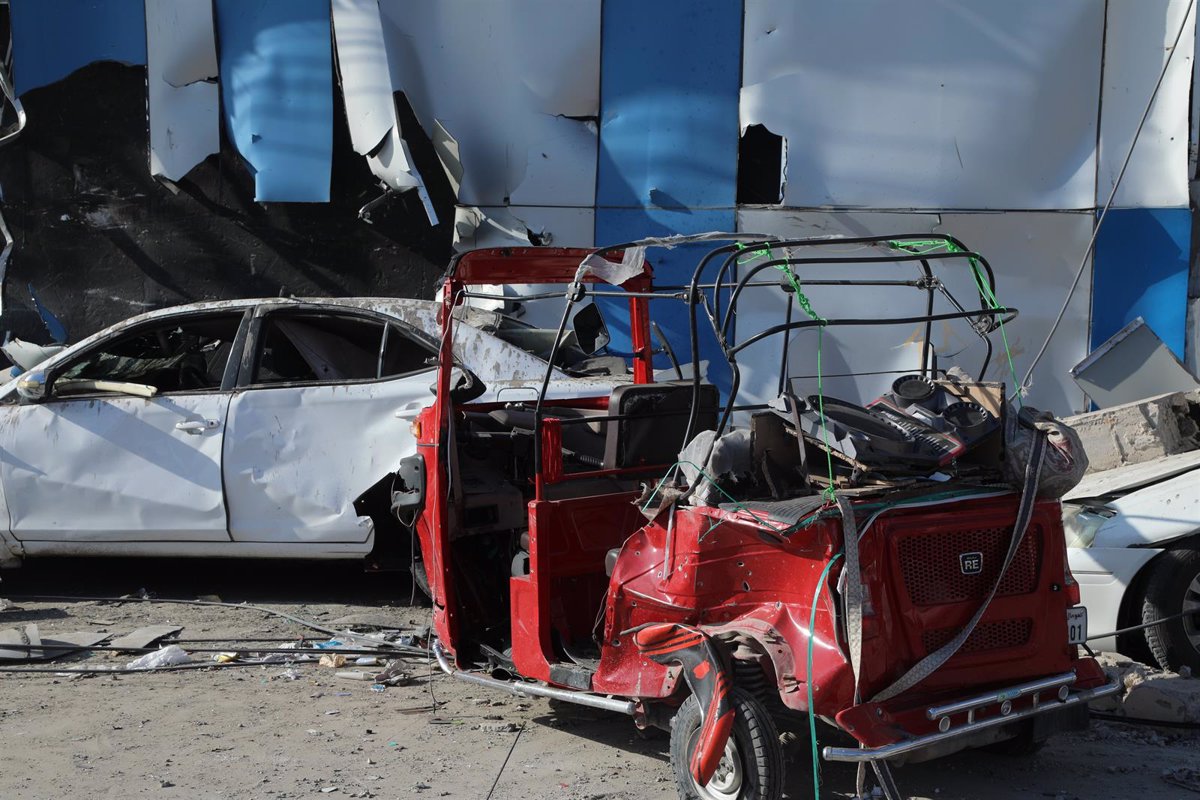The escalation of the conflict in Somalia threatens to make 2022 one of the deadliest years

RIVAL TIMES|MOGADISHU: The double attack on October 29 in Mogadishu with more than 120 dead is one of the bloodiest committed to date by Al Shabaab and comes to join a wave of attacks with which the Al Qaeda affiliate in Somalia wants to expose that has not been defeated despite the “total war” declared by the president, Hasan Sheikh Mohamud.
The immediate consequence of this upsurge in conflict is that 2022 threatens to become one of the deadliest years to date. According to data collected by the ACLED project, which counts victims of violence, some 1,400 deaths have already been counted so far this year, a figure higher than that of 2020 and 2021.
This figure – which includes the victims of Al Shabaab as well as the Somali and foreign forces operating in the country and the Islamic State affiliate, which is not very active in Somalia – is well below the record of more than 2,600 dead in 2017. , the year in which the deadliest attack to date took place. The scene of that attack, which left more than 500 dead and which Al Shabaab never claimed responsibility for, was precisely the same as that of last Saturday.
“The attacks were a message sent by the militants to show that they are still alive despite the fact that they are being defeated by government forces,” said the Somali president after the double car bomb attack next to the Ministry of Education.
Mohamud, who already governed Somalia between 2012 and 2017, took office last June and from the first moment he focused on Al Shabaab. However, it was the attack on the Al Hayat hotel in Mogadishu, which occurred on August 19, that led him to launch what he defined as a “total war” to end the Al Qaeda affiliate.
The terrorists carried out the longest siege they have committed so far, which lasted for more than 30 hours and left more than twenty dead before the assailants were killed. In addition, Mohamud was mocked in a statement for saying that he “could crush” Al Shabaab and for declaring a war “that he is not prepared to fight.”
However, experts agree that the offensive launched by government forces with the support of clan militias — known as Maawisley — as well as the African Union is making clear progress, especially in central Somalia, one of Al Shabaab’s main areas of operations, is paying off.
The operations have had their epicenter in the Hiraan region, but have also spread to neighboring Galmudug and Bay, and have allowed the jihadists to seize some towns and areas under their control, although the challenge now will be to be able to maintain them.
The Somali government is also counting on the support of the United States in this effort, particularly by air. The Joe Biden Administration decided last June to return US troops to Somalia, sending 500 troops, after Donald Trump had withdrawn troops from the African country in December 2020. In addition, so far this year they have carried out ten aerial drone strikes against Al Shabaab.
The terrorist group has proceeded to carry out numerous attacks in retaliation, including the triple suicide attack perpetrated in the capital of Hiraan, the epicenter of the offensive against it, and which left at least 30 dead, as well as many others in other points of the country’s geography, including Mogadishu. In all, by the Long War Journal’s count, he has carried out almost 40 suicide bombings this year.
In the opinion of Caleb Weiss, an expert analyst at Long War Journal, as the offensive against Al Shabaab increases and expands, the terrorist group can be expected to “carry out more retaliatory attacks against civilian targets while trying to undermine the political will and support popular to the offensive”.
An opinion shared by Rashid Abdi, an expert on the Horn of Africa. “It is no surprise that Al Shabaab is more lethal now. It has its back against the wall. It has lost more territory in four months than in the last five years,” he stressed in statements to the BBC. “He is facing the most serious revolt of the clans so far and his economic empire is under pressure,” he stresses.
This is precisely another of the fronts that President Mohamud wants to open, the economic one, to try to leave the terrorists without their sources of income, mainly the taxes they collect. According to the Somali Hiraal think tank, Al Shabaab has an annual budget of 100 million dollars, a quarter of which is used to buy weapons and combat material.
Thus, Caleb Weiss stresses that “despite some setbacks in recent years, Al Shabaab remains one of the most effective affiliates of Al Qaeda.” The group “maintains significant control over much of southern Somalia and continues to have the ability to strike in Mogadishu,” the capital from which it withdrew in 2011, as well as in Kenya, where it also controls territory.
The upsurge in violence in Somalia also occurs at a particularly delicate moment from a humanitarian point of view. The country is going through its longest drought in 40 years, already affecting 7.8 million people, a figure that has doubled since the beginning of the year. This has caused severe food insecurity, with 6.7 million affected, and the risk of famine hanging in the air.